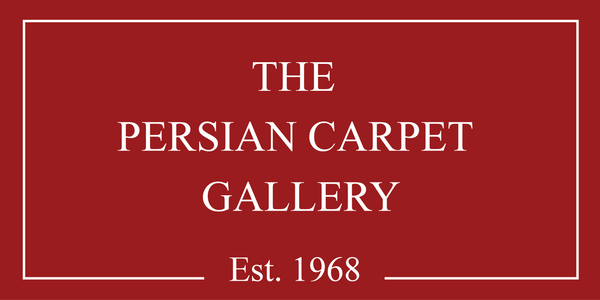Silk Carpet with Arabesques in the Cleveland Museum of Art, Cleveland, Ohio
Silk Carpet with Arabesques: A Masterpiece of Persian Weaving
Origin and Historical Significance
This exquisite silk carpet, adorned with intricate arabesques, originates from Isfahan or Kashan, two of Iran’s most renowned weaving centers during the early 17th century. Currently housed in the Cleveland Museum of Art, Cleveland, Ohio, this masterpiece is a testament to the luxurious craftsmanship of Safavid-era Persian rugs.
Dimensions and Material Composition
- Size: 206 x 127 cm (81 x 50 in.)
- Weave Type: Persian knot
- Warp: Silk
- Weft: Cotton
- Pile: Silk with gold thread woven into flat areas
The use of silk for the pile and gold thread for decorative elements reflects the opulence and grandeur associated with Persian court carpets. These materials were chosen not only for their durability but also for their ability to enhance the richness of the design and add a luminous quality to the overall composition.
The Legacy of Polonaise Carpets
During the 17th century, the royal workshops of Safavid Iran produced a distinct category of carpets known as "Polonaise" rugs. These luxurious textiles were frequently commissioned as diplomatic gifts for foreign courts, symbolizing Iran’s artistic sophistication and its prominence in international trade.
The Polonaise carpets are distinguished by their symmetrical layout, where the central field is often divided into two identical halves. This particular piece features an elaborate floral pattern interwoven with graceful arabesques, embodying the artistic traditions of Persian design. The broad border complements the central motifs, showcasing flowing arabesques enclosed within undulating bands—elements characteristic of Safavid-era elegance.
Comparable Pieces and Museum Collections
The Carpet Museum of Iran in Tehran is home to six Polonaise carpets, one of which bears a strong resemblance to the rug featured here. These pieces are significant not only for their aesthetic beauty but also for their historical value, serving as remnants of a golden age in Persian textile artistry.
This breathtaking silk carpet stands as a timeless representation of Persian heritage, celebrating the meticulous craftsmanship and refined artistic vision that defined Safavid Iran.
Would you like me to add more historical context or weave in details about how these carpets were used in Persian courts?

